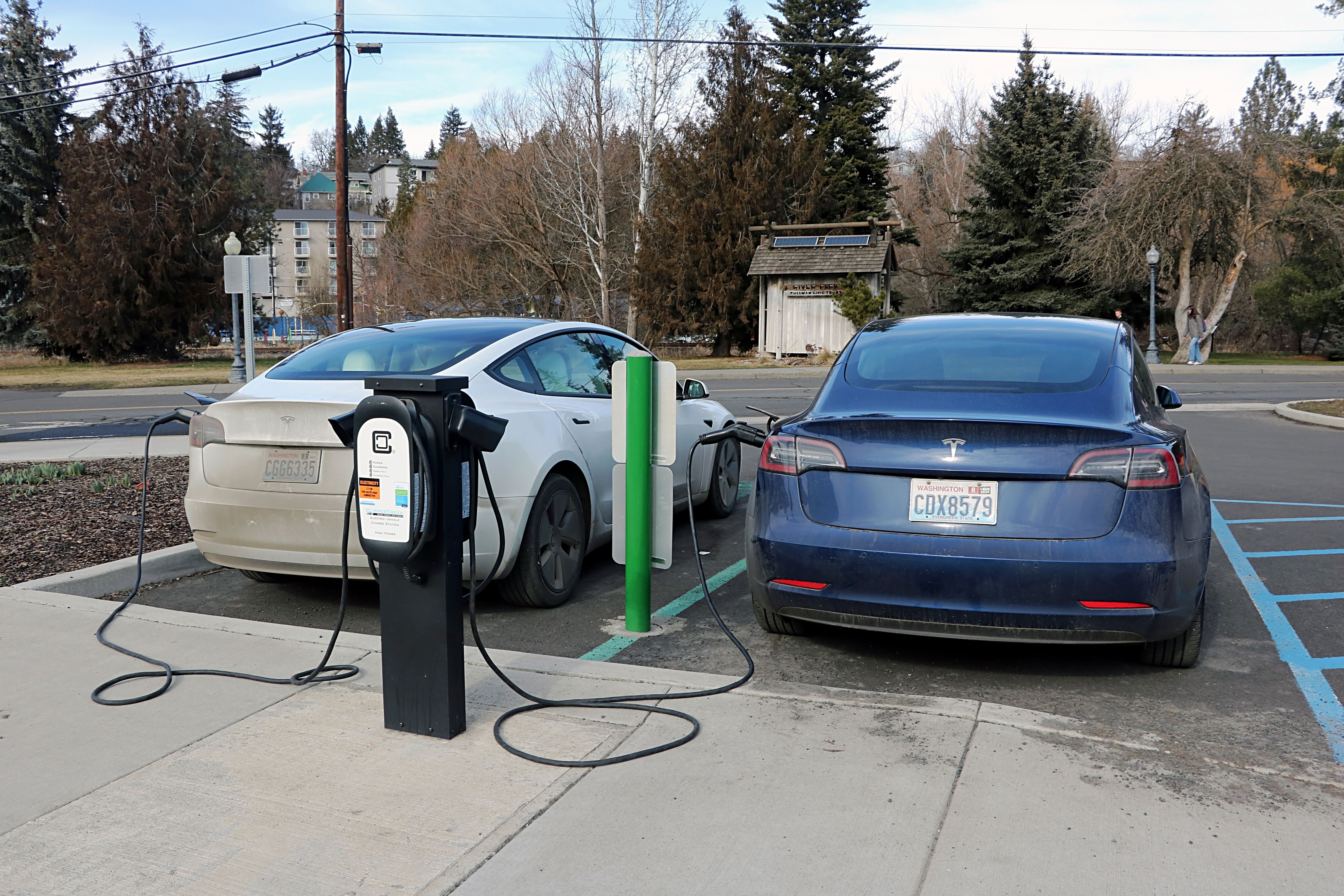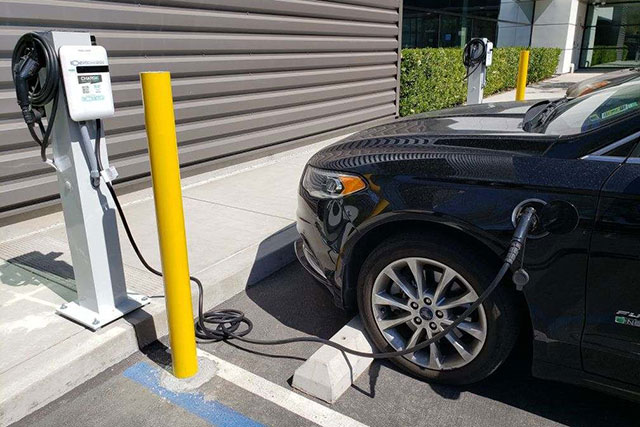Top EV Charging News: Secret Updates on Framework and Technology

Recent Developments in Fast-Charging Innovation

Moreover, improvements in battery modern technology, including enhanced thermal management systems and greater energy density batteries, enhance fast-charging capacities. These developments reduce the threat of battery destruction during rapid charging, making sure long life and efficiency for EV proprietors.
Additionally, the combination of wise billing remedies is boosting individual experience, allowing real-time surveillance and vibrant rates models. EV Charging news. This flexibility allows chauffeurs to enhance billing times and expenses based upon grid need
As car manufacturers proceed to buy fast-charging networks, the cooperation in between sector stakeholders is critical. Collaborations in between billing terminal carriers and auto suppliers are leading the way for considerable insurance coverage, inevitably cultivating an extra durable EV environment. These developments are critical in supporting the transition to lasting transport.
Federal Government Efforts for Charging Expansion
Government efforts play a vital role in the development of electrical automobile (EV) charging infrastructure, facilitating the transition to lasting transportation. Various government and state programs are being applied to improve charging accessibility, lower the monetary concern on customers, and advertise the adoption of electrical automobiles.
Significantly, the U.S. federal government has allocated substantial funding via the Facilities Investment and Jobs Act, which sets aside $7.5 billion for EV charging network growth across the nation. This financing is targeted at releasing thousands of brand-new charging terminals, especially in underserved locations, consequently dealing with array anxiety amongst potential EV customers.
Additionally, countless states are passing regulation to improve the allowing procedure for billing terminal setups, which is crucial for speeding up deployment. Rewards such as tax obligation credit reports and rebates for both consumers and organizations are also being presented to urge the installation of billing framework.
Additionally, public-private collaborations are significantly becoming a focus, leveraging exclusive financial investment to complement government financing. These campaigns underscore a collaborative technique essential for building a detailed and reliable EV charging network, eventually adding to a greener and even more lasting future.
Innovative Battery Solutions Enhancing Efficiency
Reinventing the landscape of electrical lorry (EV) modern technology, innovative battery services are considerably improving effectiveness and efficiency. Breakthroughs in battery chemistry, specifically with lithium-sulfur and solid-state batteries, are bring about increased energy thickness, which allows for longer ranges and faster billing times. These brand-new battery kinds have the possible to outmatch traditional lithium-ion batteries by offering higher abilities while decreasing weight, therefore enhancing overall vehicle effectiveness.
In addition, growths in battery administration systems (BMS) are enhancing energy usage and extending battery life-span. Smart formulas keep an eye on battery health and wellness and performance, enabling real-time changes to billing and discharging processes. This not just enhances the efficiency of the battery but also ensures an extra sustainable and reliable power source for EVs.
Additionally, the integration of reusing technologies is addressing the ecological effect of battery manufacturing and disposal. Advancements in second-life applications for EV batteries are facilitating their usage in energy storage systems, adding to a circular economic situation.
As these ingenious battery solutions remain to develop, they assure to transform the EV market, making electric automobiles much more easily accessible and attractive to a wider audience while sustaining global sustainability goals.

Partnership In Between Automakers and Billing Networks
Acknowledging the important requirement for a robust charging infrastructure, automakers are increasingly collaborating with billing network providers to boost the EV possession experience (EV Charging news). These collaborations aim to create a seamless billing ecological community that profits consumers and supports the change to electrical automobiles
Major automobile brands are joining pressures with well established charging networks to expand their billing terminal coverage, ensuring vehicle drivers have accessibility to reliable and hassle-free charging options. For example, partnerships with networks like ChargePoint and Electrify America allow car manufacturers to integrate billing options directly right into their cars' navigating systems, assisting users to the local stations and giving real-time availability updates.
Additionally, these cooperations typically cause the advancement of fast-charging modern technologies that considerably lower the time required to reenergize an EV. By pooling sources and proficiency, car manufacturers and billing networks can innovate quicker, developing services that satisfy the expanding demand for electrical mobility.
In addition, joint campaigns might also cause even more standardized charging procedures, which can anonymous relieve consumer confusion and promote more comprehensive EV fostering. Overall, these calculated partnerships are crucial in building a efficient and easy to use charging infrastructure that meets the requirements of a broadening electrical lorry market.
Obstacles Facing EV Charging Facilities
As the electrical automobile market remains to expand, numerous obstacles are appearing that prevent the development of a comprehensive charging infrastructure. One of the primary obstacles is the insufficient number of billing terminals, specifically in country and underserved city locations. This space produces variety stress and anxiety among potential EV buyers, deterring them from article making the button.
Furthermore, the lack of standardization in billing modern technology makes complex the infrastructure landscape. Variants in plug types and billing speeds can create complication for users and raise operational intricacies for charging network drivers.
One more pushing problem is the high price connected with the installation and upkeep of charging stations, which can be an obstacle for both public entities and personal businesses. Lastly, regulatory obstacles and zoning constraints can delay the release of charging facilities, impeding development in increasing vital solutions. Dealing with these difficulties will certainly be essential for promoting a durable EV ecosystem that supports the shift to lasting transport.
Verdict
To conclude, the ongoing developments in EV charging technology, supported by considerable federal government initiatives and innovative battery services, are important for the growth and effectiveness of electrical automobile facilities. Collaborations between automakers and charging providers further enhance terminal insurance coverage, resolving the expanding need for available charging options. Regardless of obstacles that continue within the EV charging landscape, these developments signify a favorable trajectory in the direction of a much more reliable and lasting electric vehicle ecological community.
Technologies in billing infrastructure have actually led to the growth of ultra-fast chargers capable of supplying up to 350 kW of power, substantially decreasing billing times. Variants in plug types and billing speeds can see this site develop complication for users and raise operational complexities for billing network operators.In verdict, the continuous advancements in EV billing technology, sustained by considerable federal government efforts and cutting-edge battery solutions, are essential for the development and effectiveness of electrical car framework. Partnerships in between automakers and billing companies further improve terminal coverage, attending to the growing need for easily accessible billing choices. Regardless of challenges that linger within the EV charging landscape, these advancements indicate a positive trajectory towards an extra reliable and sustainable electric lorry ecosystem.